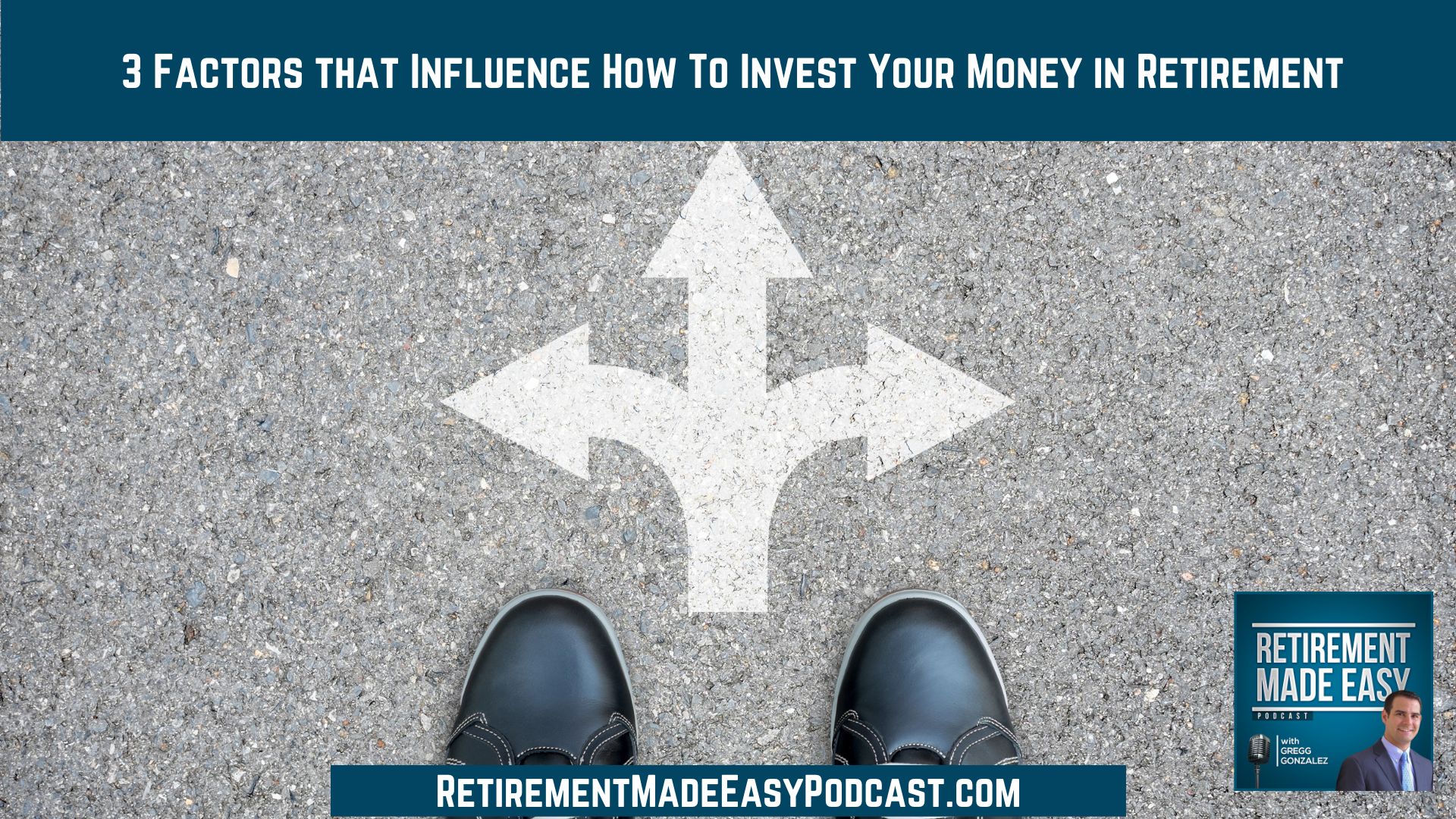
How should you invest your money once you’re retired? I get asked this question frequently because people are hoping for a quick recipe for success. But that’s not how it works. When I help you build a retirement portfolio, I start by looking at three factors. These three factors will dictate how we invest your money for a successful outcome:
- Do you need an income to supplement your social security or pension?
- What is the minimum rate of return you need for a successful retirement?
- What is your risk appetite? What risk are you comfortable taking?
Tune in to this episode of the Retirement Made Easy Podcast to learn more about each of these factors that influence how we invest in your retirement portfolio.
You will want to hear this episode if you are interested in…
- [1:39] Get a 30-minute retirement coaching call!
- [2:51] Why a cookie-cutter approach to investing doesn’t cut it
- [5:34] How much income will you need every month?
- [6:46] What is your retirement action plan?
- [8:20] Does your portfolio match your risk tolerance?
- [11:46] Retire knowing what it takes to be successful
- [14:03] The top 3 factors that influence how you invest your money
Why a cookie-cutter approach to investing doesn’t cut it
Many people are invested in a retirement date fund in their 401ks. The “date” is the year closest to your 65th birthday. For every year you get older, the fund becomes more conservative (toward bonds). If you look at the T. Rowe Price 2025 Target Date Fund, you’ll see that 46% of the fund is invested in stocks and the rest is in bonds or cash.
I don’t like retirement date funds. Why? Everyone is invested in the exact same way. It doesn’t take into account risk tolerance, the necessary returns for a successful outcome, and more. It basically just says that everyone that’s nearing retirement invests their money exactly the same.
But here’s a hard truth: You can’t take a cookie-cutter approach to investing.
How much income will you need every month?
When you retire, you’re no longer saving in a 401k or Roth IRA. So the first question I usually ask is how much income you’ll need to live on every month. Let’s say you need $2,000 a month on top of social security. Some people live just fine on a pension and social security. Some people don’t need a monthly income but want to take lump-sum chunks out for travel, purchasing a new vehicle, etc. So their withdrawals are irregular. Whatever it is, we need to determine what you’ll need as we start planning.
What is the minimum rate of return you need for a successful retirement?
Your retirement action plan tells us what rate of return you need from your entire retirement portfolio during retirement for it to be a success. If you’re investing your money in CDs but you’re only getting 1–2% returns, it’s like getting on a bicycle and driving from New York to LA. It won’t cut it. If you need an average rate of return of 5%, you need a portfolio with an average annual rate of return of 5% or better, right?
If we know you need a 4% average annualized return but we invest conservatively and only get a 2% return? You run the risk of running out of money in retirement. You might be left living on your pension and social security.
Does your portfolio match your risk tolerance?
Imagine your portfolio dropped 20% in a single year. So a $1 million portfolio is now worth $800,000. How would you react? Some people would add more to their portfolio because the “market is on sale.” Others would wait it out because they’re long-term investors and the market will recover. Others can’t stomach a 20% loss in a single year and might panic and cash out. How much risk can you handle?
I dive into each of these questions further in this episode, so be sure to listen. And don’t be afraid to send me any questions you have about retirement—you might just have your question featured on an episode!
Resources & People Mentioned
Connect With Gregg Gonzalez
- Email at: Gregg@RetireSTL.com
- Podcast: https://RetirementMadeEasyPodcast.com
- Website: https://StLouisFinancialAdvisor.com
- Follow Gregg on LinkedIn
- Follow Gregg on Facebook
- Follow Gregg on YouTube



